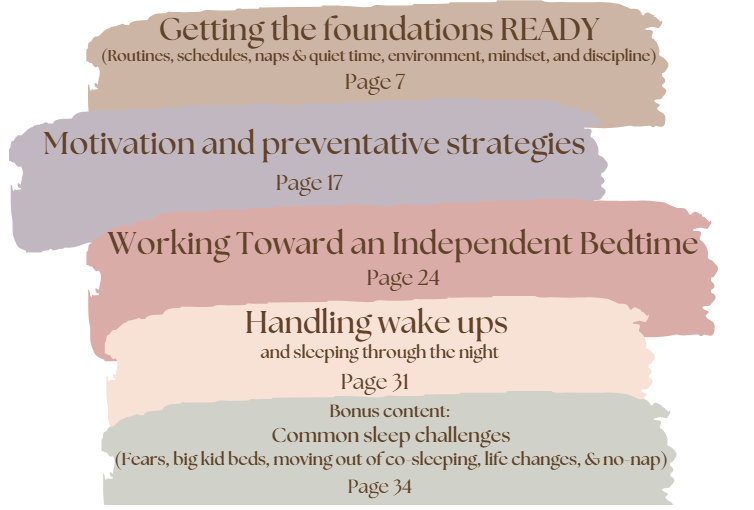When Should You Say Bye-Bye to Toddler Naps and Hello to Quiet Time
- Kelsey Flores

- Apr 30
- 3 min read
Navigating toddler sleep can be an exciting yet challenging journey for parents. It can seem like one moment your child is peacefully napping, and the next, you are left wondering when to transition to quiet time. This leap can feel overwhelming, especially if you're unsure about the signs to look for or how to make the transition easier. Take a deep breath; we’ve got you covered!
In this post, we will delve into the signs that your toddler is ready to say goodbye to naps and embrace a gentle new routine of quiet time. If you are still facing sleep challenges or require additional guidance, exploring a toddler sleep guide may offer the insights you need.
Understanding Toddler Sleep Needs
Before discussing the transition, it’s crucial to understand that every child has unique sleep needs. According to sleep experts, toddlers generally require about 12 to 14 hours of sleep in a 24-hour period, which includes both nighttime and daytime rest.
At around 2 to 3 years old, many toddlers start to consolidate their sleep, meaning they may begin shedding their afternoon nap. Research indicates that about 30% of children stop napping by age 3, and this percentage rises as they approach age 4. This change can be challenging, especially if you are accustomed to getting that quiet time during the day!
Signs Your Toddler Might Be Ready to Drop Naps
Every toddler is different, but there are common signs that might indicate it’s time to move on from naps:
Difficulty Falling Asleep During Nap Time: If your child often resists naps or takes longer than usual to drift off, it may be time to reassess their need for daytime sleep.
Waking Up Too Early from Naps: If your little one used to nap for a solid two hours but now wakes up just 30 to 45 minutes into it, this could be a sign they are getting enough rest and are ready to skip the nap.
Increased Energy in the Evening: If your child seems to have an abundance of energy in the late afternoon, resembling an energizer bunny, it might mean their internal clock is adjusting.
Consistent Late Bedtimes: If your toddler struggles to fall asleep at the usual time, even after skipping a nap, this may indicate they no longer need it.
How to Transition from Nap Time to Quiet Time
The change from nap time to quiet time can feel abrupt, but it doesn't need to be stressful. Here are a few tips to help make this transition smoother for everyone:
1. Set a Routine
Establishing a consistent schedule can help your child adapt more easily. Try to keep quiet time at the same time of the day as their previous naps; this familiarity can ease the change.
2. Create a Calm Environment
Designate a comfortable area for quiet time. Use soft lighting, a cozy blanket, and provide quiet activities like reading or drawing. A soothing atmosphere encourages relaxation and makes the transition smoother.
3. Introduce Quiet Activities
Offer engaging but calming activities for quiet time. For instance, puzzles, coloring books, or listening to soft music can provide enjoyable options without overstimulating your child.
4. Keep Expectations Flexible
Flexibility is essential during this adjustment phase. Some days your child may independently enjoy quiet time, while other days they might need a short nap. Provide grace during this transition.
The Benefits of Quiet Time
Transitioning from nap time to quiet time can provide significant benefits:
Promotes Independence: Quiet time fosters self-soothing and independent play, essential for your toddler's development.
Encourages Creativity: Freeing up structure allows children to engage in imaginative play or creative activities, enhancing their creative expression.
Reduced Bedtime Struggles: Skipping a late afternoon nap can lead to an easier bedtime, as children are less likely to feel overstimulated.
Embracing the Change
While saying goodbye to toddler naps and welcoming quiet time can feel daunting, it is just another chapter in your parenting journey. Look for the signs your child is ready to drop their daytime nap and approach this new routine with patience and understanding.
If you still feel overwhelmed or need more assistance in navigating your toddler’s sleep patterns, check out my Toddler Sleep Guide. It's filled with tips and practical strategies to create a peaceful sleeping environment for your child.

Remember, you are not alone in this journey. Each toddler will progress at their own pace, and by maintaining a nurturing environment, you will set the stage for success—even without daytime naps!





Comments